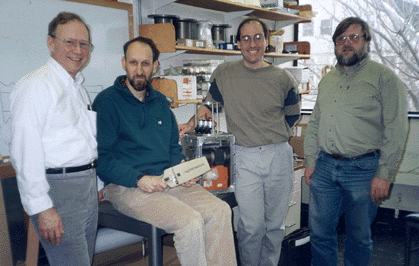
Ed Sholkovitz, Geoff Allsup, Richard Arthur, Dave Hosom
Woods Hole Oceanographic Institution, Woods Hole, MA, USA
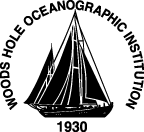
Autonomous Aerosol Sampler and Sensors for Ocean Buoys and Remote Sites |

|
Ed Sholkovitz, Geoff Allsup, Richard Arthur, Dave HosomWoods Hole Oceanographic Institution, Woods Hole, MA, USA |

|
| contact: esholkovitz@whoi.edu |
The Long-Term Scientific Objectives
|
Areas of research that can be addressed with aerosol data from buoys:
|
The Long-Term Technical Goals: |
| (I) Develop a buoy-mounted sampler for the time-series collection of aerosols. Aerosols returned to the laboratory for chemical analysis. This project has been successfully completed with testing at Bermuda AEROCE tower and on a buoy off Woods Hole. (NSF Grant OCE-94-23221 from Ocean Technology and Interdisciplinary Coordination section) |
Island Test on Bermuda AEROCE Tower Aug-Nov 1996 |
||
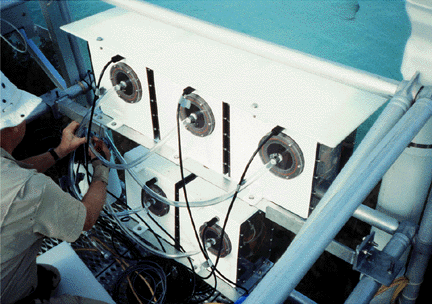
|
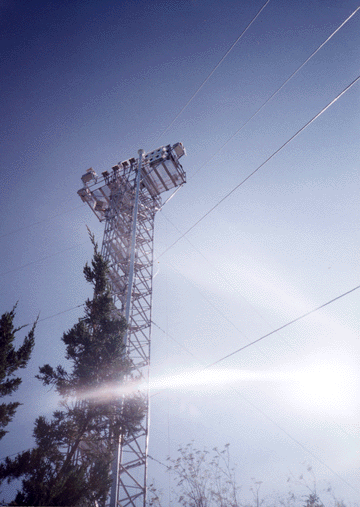
|
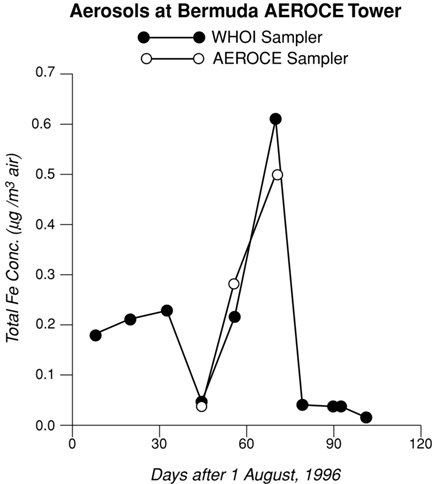
|
| Back view of 5 filter modules on tower | AEROCE Sampling Tower | Time Series Comparison |
| (II) Develop buoy-mounted sensors for the real-time measurement of the chemical composition of aerosols embedded on filters. Focus will be on using x-ray fluorescence to measure the elemental concentrations of dust (Fe, Al), seasalt (Cl, S, K and Mg) and non-seasalt sulfur compounds. NSF grant (OCE-97-11891) will commence on 1 Jan. 1998. |
Sea Test on Buoy off Woods Hole - Jun-Aug 1997 |
|
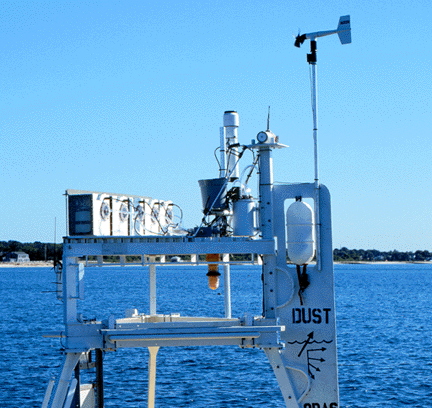
|
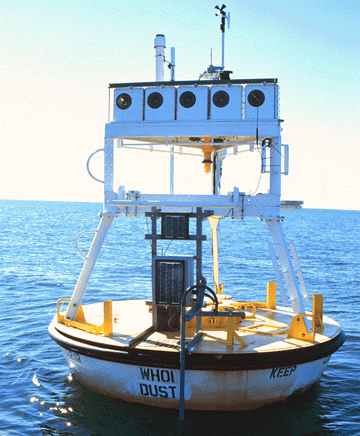
|
| Buoy Tower Top | WHOI Aerosol Sampling Buoy |
Last Modified: 20 Apr 98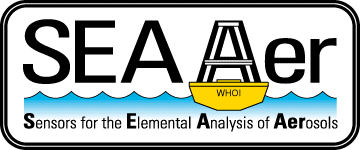 One can envision a remotely controlled field laboratory in which
buoy-mounted sensors allow one to study in real time the response of
upper ocean biology and chemistry to pulses of dust. Real-time data
on the Fe concentration of aerosols and rainwater reaching the ocean's
surface would allow researchers to trigger buoy-mounted water sensors
and water samplers and sediment traps. These, in turn, could measure
light scattering, chlorophyll, nutrients, dissolved O2 and collect
water and particles for the measurement of Fe, trace metals, Th-isotopes,
organic carbon, phytoplankton species, dust, etc.
One can envision a remotely controlled field laboratory in which
buoy-mounted sensors allow one to study in real time the response of
upper ocean biology and chemistry to pulses of dust. Real-time data
on the Fe concentration of aerosols and rainwater reaching the ocean's
surface would allow researchers to trigger buoy-mounted water sensors
and water samplers and sediment traps. These, in turn, could measure
light scattering, chlorophyll, nutrients, dissolved O2 and collect
water and particles for the measurement of Fe, trace metals, Th-isotopes,
organic carbon, phytoplankton species, dust, etc.
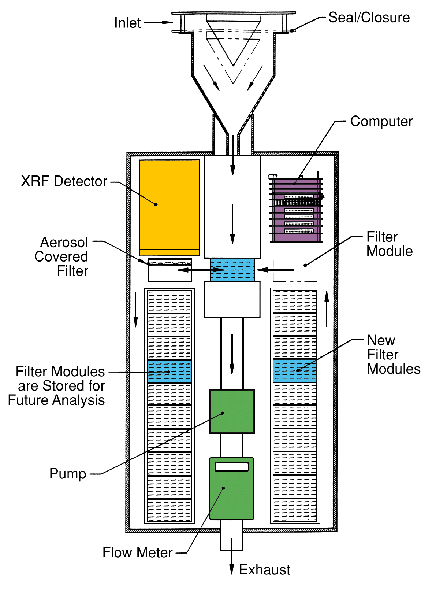

Block Diagram of an Autonomous Aerosol Sensor
Complete Buoy System
by Geoff Allsup